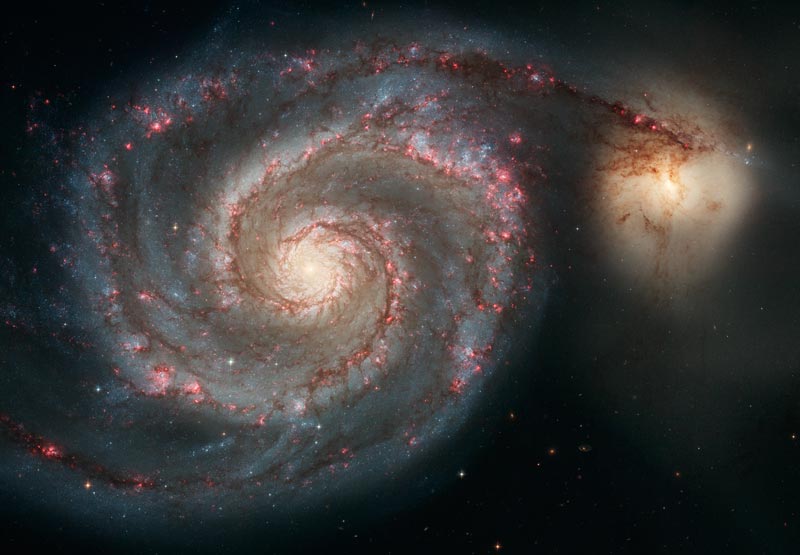One great mystery about our galaxy right now has to do with a cloud of antimatter near the center of the galaxy. No one knows exactly how or why this antimatter is being generated. However, data being looked at from the last four years, from the European Space Agency, may have had a bit of a break through.
Antimatter is the antiparticles to matter; where normal matter is made up of particles, antimatter is made of antiparticles. Each antiparticle has the same mass as its matter counterpart but is opposite in electric charge and magnetic properties, for example the antimatter partner to an electron is a positron. When matter and antimatter collide they annihilate releasing a large amount of energy.
This cloud of antimatter was discovered in the 1970’s. It is about 10,000 light years across and generates the energy of 10,000 suns. The cloud shines brightly with gamma rays; this is because of the antimatter colliding and annihilating with normal matter. Their interaction releases high-energy gamma rays, which allows for us to detect the antimatter’s presence. For years scientists have theorized the antimatter coming from radioactive elements produced in supernovae, or that the positrons are coming colliding stellar winds or other types of novae. But there was in evidence to really support any of these theories.
Now with data from the International Gamma-Ray Astrophysics Laboratory, or INTEGRAL, astronomers have noticed something new. The cloud extends further on the western side of the galactic center than on the eastern side. This location matches of very well with the distribution of a population of hard low-mass x-ray binary star systems. These star systems consist of a low mass star orbiting with either a neutron star or a black hole. X-rays are given off when gas from the low mass stars falls in on the neutron star or black hole. Because the positions of the binaries and antimatter line up so well astronomers believe that the binary systems are producing half or all of positrons seen in the cloud.
We now may have a good idea of where the antimatters coming from, however we still have no idea how/why exactly the binary systems are producing these positrons. Astronomers believe it has something to do with the jets of relativistic material and areas of strong magnetic fields that can be common with these types of systems. With the GLAST space telescope having been launched and starting to collect data, we could potentially gain a lot more insight into what exactly is going on very soon.

